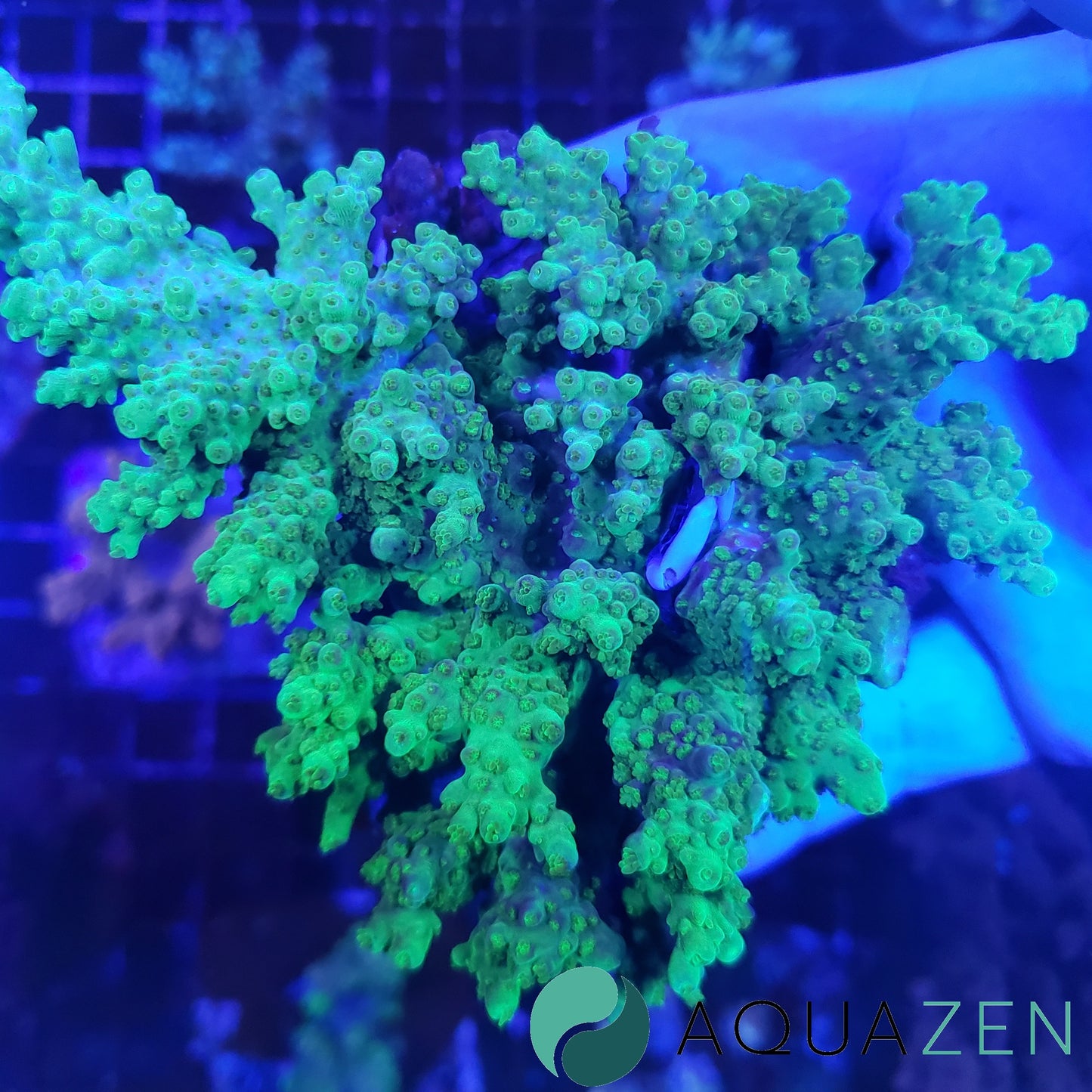AquaZen
Toxic Green Acropora Florida
Toxic Green Acropora Florida
Regular price
$10.00 CAD
Regular price
$35.00 CAD
Sale price
$10.00 CAD
Unit price
per
Shipping calculated at checkout.
Couldn't load pickup availability
Acropora florida is a species of small polyp stony coral (SPS coral) that belongs to the Acroporidae family. It is native to the Caribbean Sea and the western Atlantic Ocean. Here's a description and care guide for Acropora florida:
Description:
- Appearance: Acropora florida typically forms branching colonies with delicate, intricate structures. The branches can be densely packed or more widely spaced, depending on environmental conditions.
- Color: This species exhibits a range of colors, including brown, tan, cream, and sometimes with hints of green or pink. The coloration can vary depending on lighting and water quality.
- Polyps: The polyps of Acropora florida are small and typically extend during the night to feed, retracting during the day. They can be translucent and barely visible when retracted.
- Growth: Under favorable conditions, Acropora florida can grow relatively quickly, forming expansive colonies in reef environments.
Care Guide:
-
Water Parameters:
- Temperature: 75-82°F (24-28°C)
- Salinity: 1.024-1.026 specific gravity
- pH: 8.1-8.4
- Alkalinity: 8-11 dKH
- Calcium: 400-450 ppm
- Magnesium: 1250-1350 ppm
- Phosphate and Nitrate: Low levels, as SPS corals are sensitive to high nutrient levels.
-
Lighting:
- Acropora florida requires high-intensity lighting, such as metal halide or LED fixtures specifically designed for reef aquariums.
- Place it in the upper to middle part of the tank where it can receive strong, direct light.
-
Water Flow:
- Provide strong and turbulent water flow to mimic natural reef conditions and prevent detritus buildup on the coral's surface.
- Use powerheads or wavemakers to create random flow patterns within the tank.
-
Feeding:
- Acropora florida primarily obtains nutrients through photosynthesis but can also capture planktonic organisms and organic matter from the water.
- While not necessary, supplemental feeding with phytoplankton or zooplankton can be beneficial, especially for colonies with slower growth or paler coloration.
-
Placement:
- Place Acropora florida in an area with moderate to high water flow and strong lighting.
- Provide ample space between colonies to prevent shading and competition for space.
-
Water Quality:
- Maintain stable water parameters by regularly testing and adjusting as necessary.
- Perform routine water changes to replenish trace elements and remove accumulated waste.
-
Acclimation:
- When introducing Acropora florida to a new aquarium, acclimate it gradually to prevent stress and ensure a smooth transition.
-
Pests and Predators:
- Keep an eye out for common coral pests such as flatworms, nudibranchs, and coral-eating snails. Quarantine new corals before adding them to the main tank to prevent introducing pests.
By providing optimal conditions and regular care, Acropora florida can thrive and contribute to the beauty and biodiversity of a reef aquarium. Regular observation and maintenance are essential to ensure its health and vitality.


